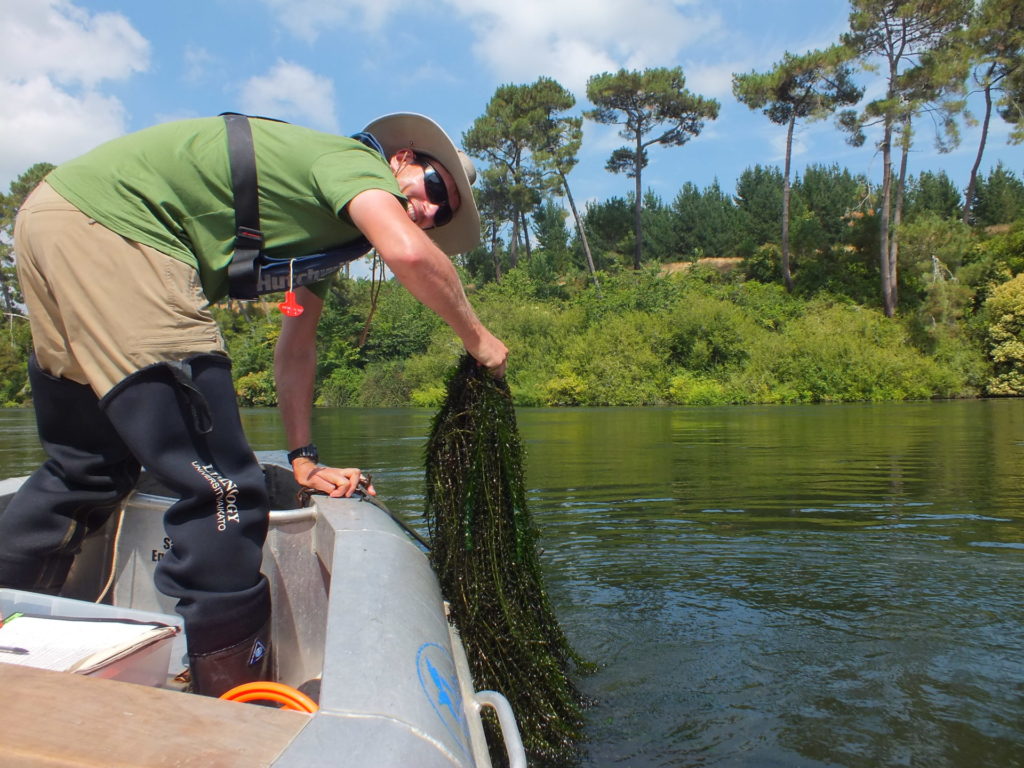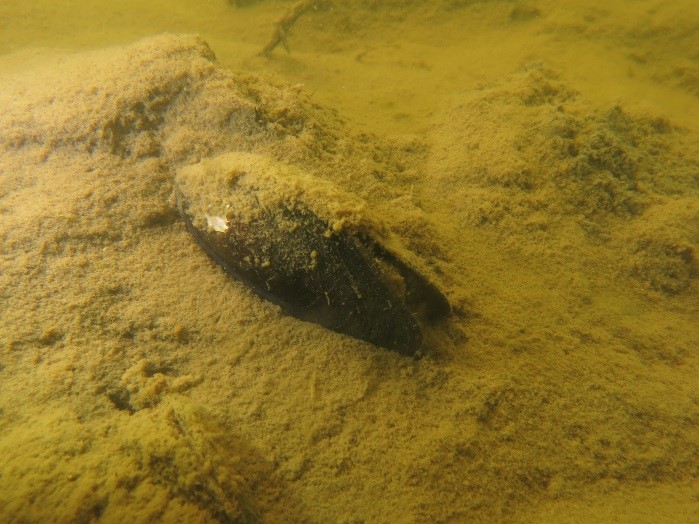The freshwater mussel housing crisis: eviction by invasive weeds?
University of Waikato PhD candidate Tom Moore investigates the housing crisis of taonga species kākahi.

Tom Moore, University of Waikato PhD student
Traditionally a food source and cutting tool, freshwater mussels/kākahi are now widely valued as water filters that help clean our waterbodies and maintain ecosystem health throughout Aotearoa.
The improvement they provide in water quality can make it easier for other animals to live in streams and rivers, as well as making the water safer for recreational activities and food harvesting.
But recent data have shown these precious bivalves might be under threat of eviction by invasive freshwater weeds, especially in some lakes.
Lake Karāpiro sits in the middle of the mighty Waikato and is home to a large kākahi population, but over the last 50 years invasive weed beds have encroached into the neighbourhood. These nuisance weeds can reduce the oxygen content of the water overnight, increase ammonia levels near the lakebed, and trap sediments that potentially smother our native bivalves.
To find out if the freshwater mussels in Lake Karāpiro have been evicted by their new, invasive landlords, we conducted a dive survey to compare areas inside and outside weed beds over the summer of 2019.
Where are the weeds?
As luck would have it, mussels may not be the only animals upset with weed encroachment! One week prior to our planned dive survey, herbicide was applied to four of our eight study sites as part of a management plan for Lake Karāpiro – a popular rowing venue.
At first glance this was unfortunate, but a silver lining emerged. We found prolonged anoxic (oxygen-depleted) conditions at the bottom of decomposing weed beds after the herbicide was sprayed, which was a new set of conditions we could investigate.
Low oxygen at the lake bottom may be especially detrimental for the survival of sensitive juvenile mussels, because they are thought to feed beneath the sediments, rather than mainly from the water column like adults.
The spraying enabled us to look at changes before and after herbicide application, as well as the influence of invasive weeds on water and sediment quality, and freshwater mussel density.

Are mussels already on their way to the Tenancy Tribunal?
Preliminary results found freshwater mussels can live inside invasive weed beds. However, weed beds in shallow water generally contained fewer freshwater mussels.
Furthermore, locations where herbicide was sprayed (and had been regularly sprayed for many years) had high ammonia and smothering sediments at the time of sampling, which may explain how few kākahi we found.
Although we only sampled a small part of Lake Karāpiro, kākahi appear to have been evicted from some invasive weed beds but remain in others.
It appears that not all invasive weed-housing is made equal: where some weed beds have smothering sediments and high ammonia, others have normal water chemistry and are quite habitable.
Mussels filing a complaint
Despite not having vocal cords, freshwater mussels would probably have a lot to say regarding their housing situation. Adverse conditions underneath some invasive weed beds may force kākahi to find a new home, or die. Herbicide application exacerbates pulses of anoxia and ammonia in the short-term, which may especially impact juvenile mussels.
In the future we aim to tease apart the complexities surrounding invasive weed housing conditions, and provide information to environmental managers to mitigate impacts on our freshwater mussels.
Tom’s research is part of the Tranche 1 BioHeritage project looking at how we can best manage threats to taonga freshwater invertebrates, find out more here.
Posted October 2019